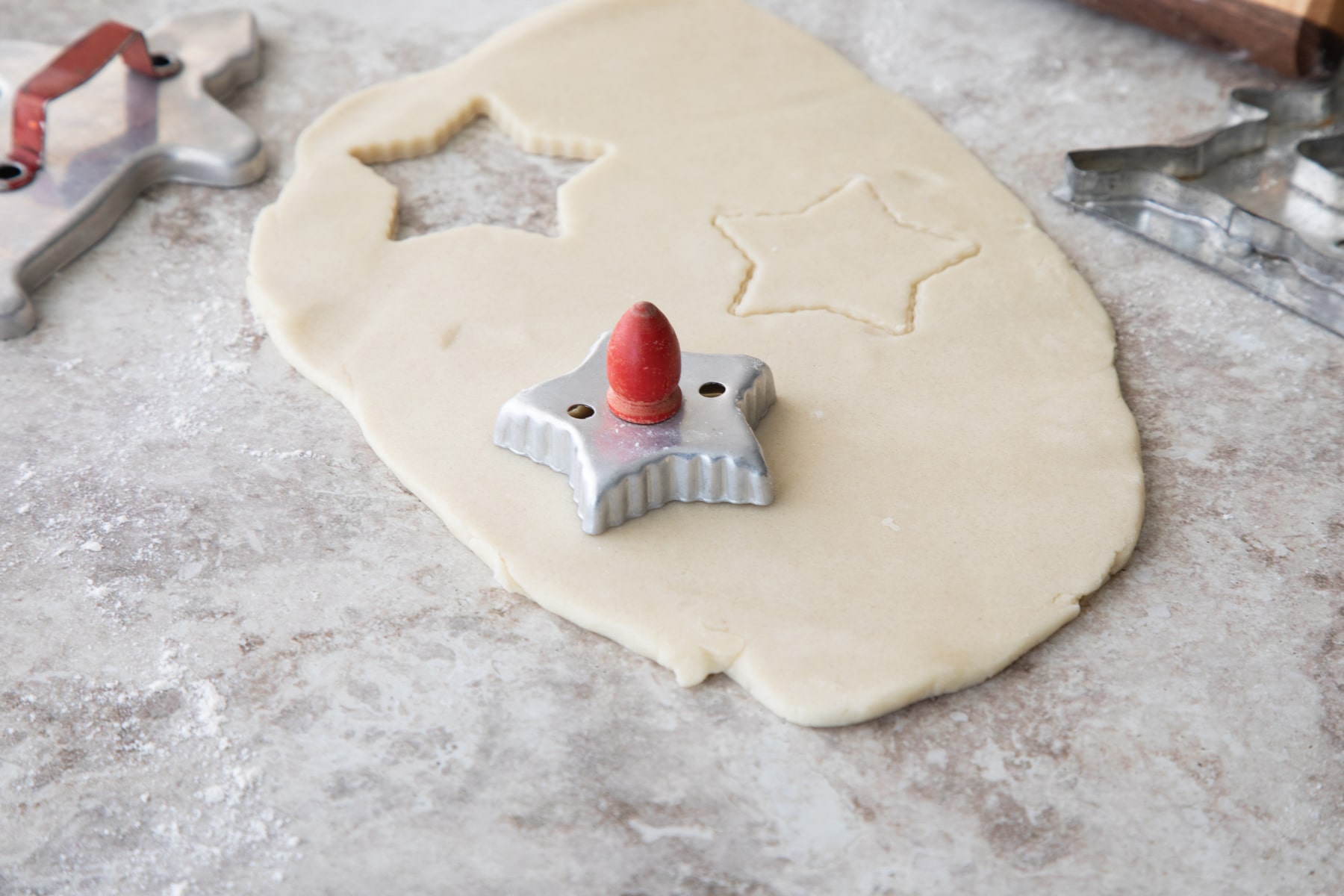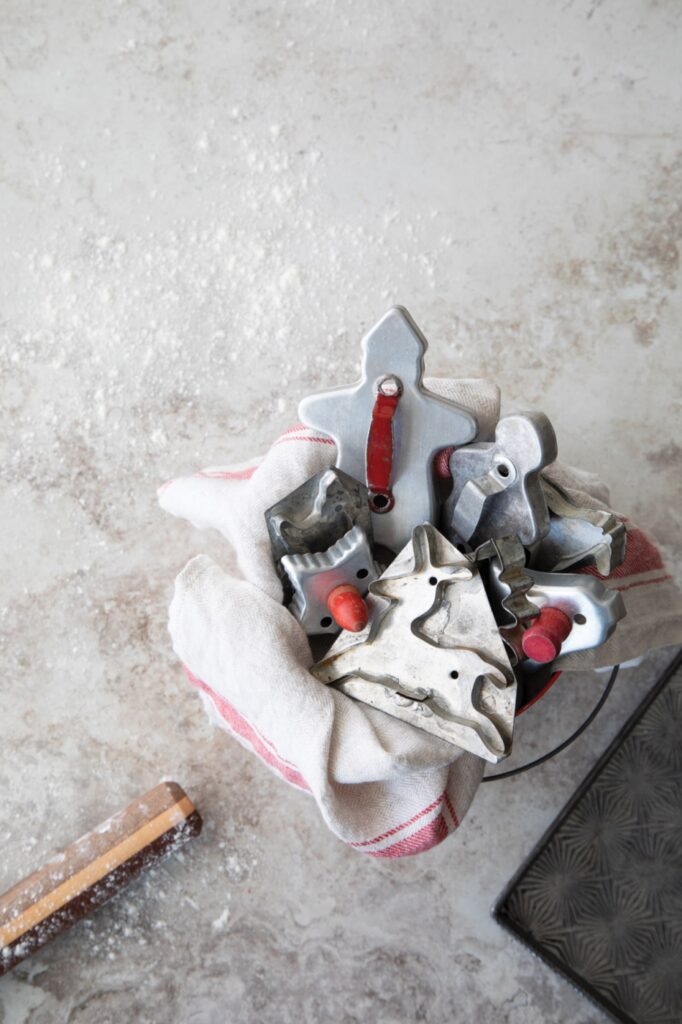
The Classic Cookie Cutter: A History
Story by Katy Budge
Photography by Lori Rice
Remember those days of baking holiday cookies? Measuring the sugar, cracking the eggs, sending poofs of flour into the air and, most importantly, licking the bowls. Many of us can fondly recall the vintage tin and aluminum cookie cutters used in day-long holiday baking marathons but the origin of these shape makers is less commonly known.
All but a couple of the cutters photographed for this story were passed down to me from my grandmother and enjoyed through the generations. Grandma’s collection had all the essential winter holiday shapes: leaping reindeer, Christmas tree, star, gingerbread man and woman. The reindeer was a crowd favorite if only because its long, flimsy legs often broke off or bent unnaturally, giving cause for the “mistake” to be eaten — er, disposed of — on the spot.

For some reason, this family assortment also contained a lot of animals such as a bear, a duck and not just one, but two sitting cats and two horses. Many of those evoked a homespun folk art aesthetic that wasn’t necessarily holiday themed but somehow fit within the collection.
Cookie Cutters Through the Years
Shaped cakes date back to ancient Egypt, but cookie cutters as we know them are believed to have originated in Italy before the 1400s. They were already in fairly widespread use throughout the rest of Europe and the United Kingdom by the 1500s. Most of the early ones were “imprint cutters,” meaning they not only cut the shape but also pushed a design into the surface of the dough.
What was first known outside the United States as “biscuit cutters” were elaborately hand-carved out of wood, especially those hailing from Germany’s Black Forest region. Like so many culinary traditions, this one was also brought to the U.S. by European immigrants.
Dutch and German settlers in Pennsylvania became known for their abundant Christmas cookie production, as well as their ornately carved molds. However, cookie makers ultimately realized that metal cut dough better than wood, so thin strips of tin and copper began to be used by the early 1700s.
Alas, England put the kibosh on tin production in the Colonies, turning it into an expensive material that had to be imported. As a result, pre-Revolutionary cookie cutters were scrupulously fashioned with tin scraps. The flat backs hewed closely to the shape of the cutters so as not to waste any metal, and it’s surmised that those with actual handles didn’t appear in America until post-Independence. Many of these early cutters were crafted with a lead-based solder and as such so, ironically, they should not be used for anything edible. Aside from our waistlines, perhaps it’s a good thing holiday cookies have only been cut once a year!
By the mid- to late-19th century, metal cookie cutters began to be mass produced in America, with tin giving way to aluminum by about the 1930s. Plastic entered into the mix not long after, but copper has remained a popular material throughout the years. Shapes have always run the gamut and these days consumers can find almost any cookie cutter design imaginable, especially with the increasing popularity of 3D printing.
Cutters as Collectibles
Most cookie cutters aren’t especially valuable, even the vintage ones, so don’t pin your Antiques Roadshow hopes on them. That certainly doesn’t stop people from amassing them, as evidenced by the Cookie Cutter Collectors Club website. The group also oversees the National Cookie Cutter Historical Museum in Joplin, Missouri. The club in 1996 successfully petitioned to have the first week in December deemed National Cookie Cutter Week.
One Minnesota Collectors Club member amassed 40,000 cutters, while another has found a myriad of uses for her cookie cutters. She uses them to shape everything from sandwiches to tortillas, sticky rice to fruit, pizza to polenta, even mashed potatoes. If that won’t get kids of all ages to eat what’s put in front of them, nothing will.
Local Finds
Across San Luis Obispo County, modern and locally inspired cookie cutters are sold during the holiday season. The Apple Farm Marketplace & Cellar, Madonna Inn and the General Store in Paso Robles are some local favorites at which to go cookie cutter hunting.

